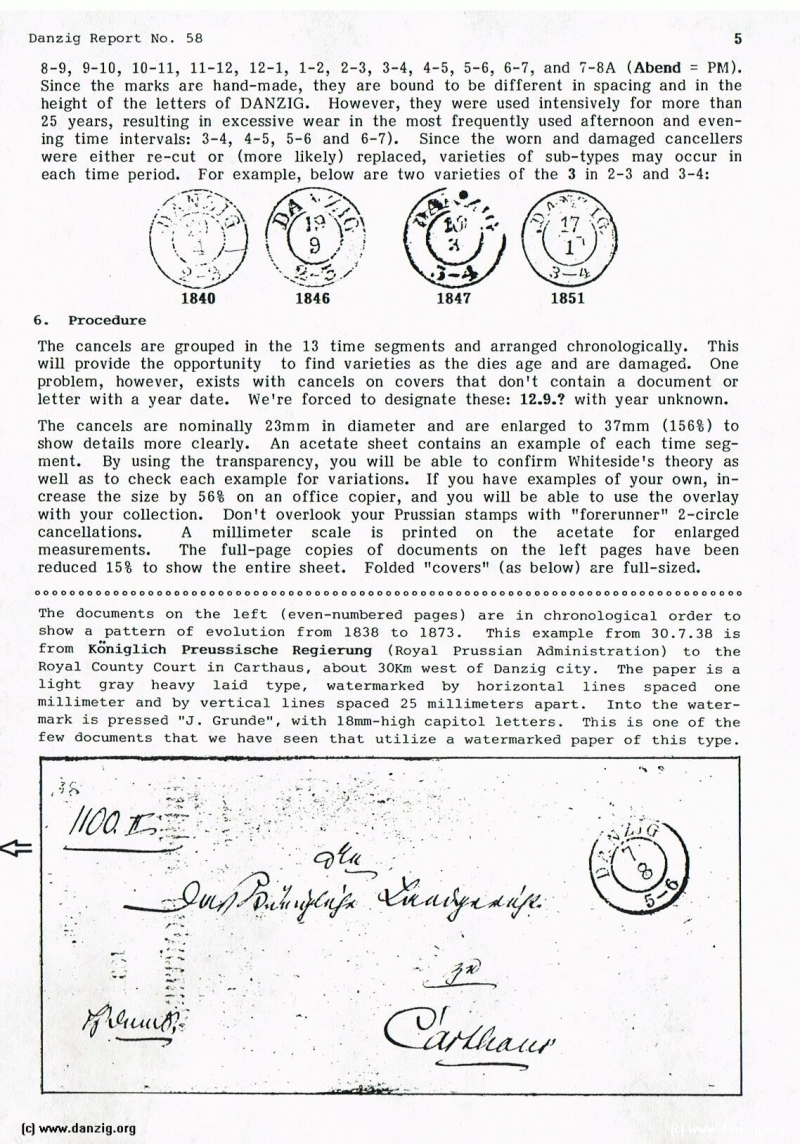
> Zweikreisstempel without year
8—9, 9—10, 10—11, 11—12, 12—1, 1—2, 2—3, 3—4, 4—5, 5—6, 6—7, and 7—8A (Abend = PM). Since the marks are hand-made, they are bound to be different in spacing and in the height of the letters of DANZIG. However, they were used intensively for more than 25 years, resulting in excessive wear in the most frequently used afternoon and eveni ng time intervals: 3—4, 4-5, 5—6 and 6—7). Since the worn and damaged cancellers were either recut or (more likely) replaced, varieties of sub—types may occur in each time period. For example, below are two varieties of the 3 in 2—3 and 3-4:
6. Procedure
The cancels are grouped in the 13 time segments and arranged chronologically. This will provide the opportunity to find varieties as the dies age and are damaged. One problem, however, exists with cancels on covers that don’t contain a document or letter with a year date. We’re forced to designate these: 12.9.? with year unknown.
The cancels are nominally 23mm in diameter and are enlarged to 37mm (156%) to show details more clearly. An acetate sheet contains an example of each time segm ent. By using the transparency, you will be able to confirm Whiteside’s theory as well as to check each example for variations. If you have examples of your own, inc rease the size by 56% on an office copier, and you will be able to use the overlay with your collection. Don’t overlook your Prussian stamps with “forerunner” 2-circle cancellations. A millimeter scale is printed on the acetate for enlarged measurements. The full-page copies of documents on the left pages have been reduced 15% to show the entire sheet. Folded “covers” (as below) are full-sized.
.........................................................................................................................................................
The documents on the left (even-numbered pages) are in chronological order to show a pattern of evolution from 1838 to 1873. This example from 30.7.38 is from K&iiglich Preussische Regierung (Royal Prussian Administration) to the Royal County Court in Carthaus, about 30Km west of Danzig city. The paper is a light gray heavy laid type, watermarked by horizontal lines spaced one millimeter and by vertical lines spaced 25 millimeters apart. Into the waterm ark is pressed “J. Grunde”, with 18mm-high capitol letters. This is one of the few documents that we have seen that utilize a watermarked paper of this type.
Danzig Report Nr. 58 - January - February - March - 1988, Page 6.
Hits: 3439
Added: 24/06/2015
Copyright: 2025 Danzig.org

